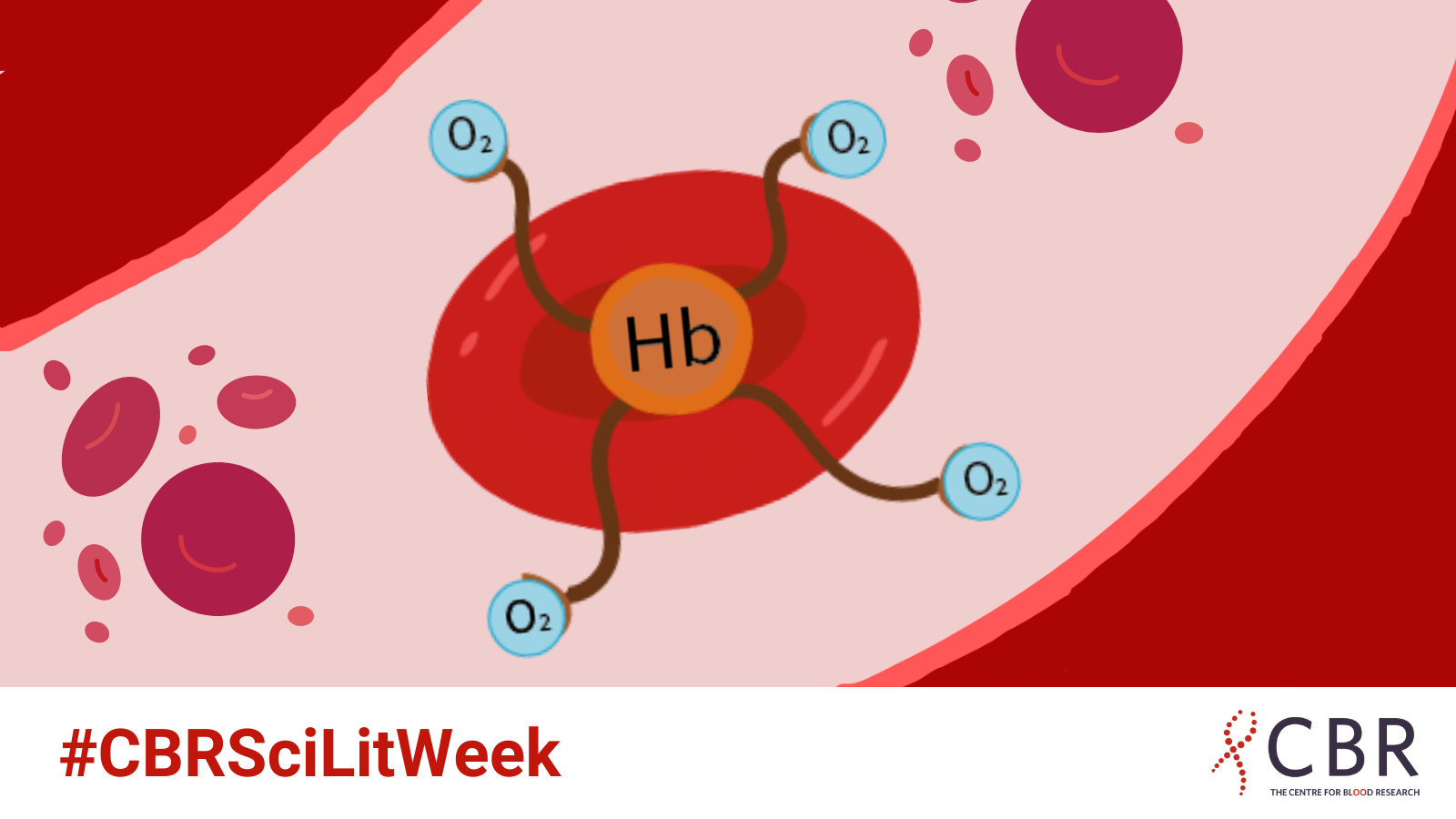For Science Literacy Week 2022, some members of our CBR Knowledge Translation Committee have joined forces to co-create a social media campaign, sharing blood facts and celebrating science with #CBRSciLitWeek. More posts will be shared throughout the week!


By: Cecilia Haymin Kim, Undergraduate student alum 2020
We all know that we need to breathe to survive. But how does the air you breathe get from your lungs to the rest of your body?
Red blood cells (RBCs) are a big part of the answer. They are responsible for carrying oxygen to your organs and tissues, and they have special features that allow them to perform this critical job effectively.
One important feature is hemoglobin, a protein inside RBCs that is made of 4 amino acid chains. Each chain has a molecule called heme, which contains the element iron. Oxygen molecules “bind” or attach to iron when RBCs in your blood travel to the air-filled sacs in your lungs. The RBCs, now carrying oxygen, then travel around the body via the circulatory system and release their bound oxygen into tissues.
Hemoglobin with its 4 chains can bind up to 4 oxygen molecules. Every time an oxygen molecule binds to a heme group, it becomes easier for the next oxygen molecule to bind – this is a process known as “cooperative binding”. Hemoglobin can also bind to other molecules, such as carbon dioxide, which is how your blood removes carbon dioxide waste from the body. RBCs will use their hemoglobin to pick up carbon dioxide from tissues, and bring it to the lungs so that it can be exhaled, while taking up a fresh batch of oxygen molecules.
When hemoglobin binds to dangerous molecules like carbon dioxide, your body can get badly hurt. Carbon monoxide molecules bind to hemoglobin so strongly that it prevents oxygen from binding, leading to carbon monoxide poisoning and even death.
The main type of hemoglobin found in humans is known as HbA. A fetus growing in the womb has a different type of hemoglobin, known as HbF, which is better at binding oxygen than the adult HbA form. This makes it better at binding and transporting oxygen from the mother’s blood to the fetus during pregnancy.
It’s clear that hemoglobin plays many important roles in one of the essential processes for life! We’re pleased to have shared some red blood cell facts with you for #CBRSciLitWeek!
What is Science Literacy Week?
Science Literacy Week showcases the many ways kids and families can explore and enjoy the diversity of Canadian science. Libraries, museums, science centres, schools and not-for-profits come together to highlight the books, movies, podcasts and events that share exciting stories of the science, discoveries and ingenuity shaping our lives. It’s about each and everyone’s unique relationship with science and how they live it.
- Read the #CBRSciLitWeek posts. More posts will be shared throughout the week!
- Learn more about Science Literacy Week.


